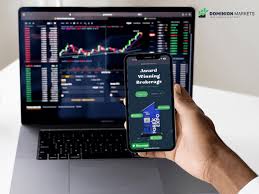Understanding Leverage in Forex Trading Risks and Rewards 1598215829 Leave a comment

In the world of forex trading, leverage serves as a double-edged sword, enabling traders to amplify their profits while also increasing their risks. This financial mechanism can be the key to significant gains but also a potential pathway to considerable losses. For those looking to better understand this critical concept, leverage in forex trading trader-apk.com provides a wealth of information and tools to help navigate the complexities of the forex market.
What is Leverage in Forex Trading?
Leverage, in the context of forex trading, refers to the ability to control a large position in the market with a relatively small amount of capital. It is essentially a loan provided by the broker that allows the trader to magnify their potential returns. For example, with a leverage ratio of 100:1, a trader can control $100,000 in the market with just $1,000 of their own funds.
The Mechanics of Leverage
When a trader opens a leveraged position, they are required to put down a margin, which is a percentage of the total trade size. If the trade goes in the trader’s favor, the profits are calculated based on the total position size, not just the margin amount. The leverage ratio is represented as a ratio (e.g., 50:1, 100:1) or as a percentage. A higher ratio indicates greater potential risk and reward. However, if the trade goes against the trader, losses can also accumulate and exceed the initial investment.
Advantages of Using Leverage
- Increased Potential Returns: The primary advantage of leverage is the potential for enhanced returns on investment. A well-executed trade can yield profits far greater than what could be achieved without leverage.
- Access to Large Positions: Traders can participate in larger trades than their capital would typically allow, opening the door to significant market opportunities.
- Flexibility in Trading Strategies: Leverage can enhance various trading strategies, allowing for more dynamic and diversified approaches.
- Efficient Use of Capital: Instead of tying up large amounts of capital in a single trade, traders can allocate their funds across multiple opportunities.

Disadvantages of Using Leverage
- Increased Risk of Losses: Just as leverage amplifies potential gains, it also magnifies losses. A minor market movement against a trader’s position can result in losing more than the initial investment.
- Margin Calls: Brokers often require traders to maintain a minimum margin level. If the account balance falls below this level due to losses, a margin call occurs, necessitating additional funds to cover the losses or the liquidation of positions.
- Emotional Stress: The high stakes involved in leveraged trading can lead to significant emotional stress, potentially clouding judgment and leading to rash decisions.
- Complexity: Understanding how leverage works requires a solid grasp of trading mechanics and market trends. Newer traders may find themselves overwhelmed by the nuances of leveraged trading.
Managing Risk with Leverage
Given the inherent risks associated with leverage in forex trading, it is crucial for traders to adopt sound risk management strategies. Here are some key principles to consider:
- Use a Reasonable Leverage Ratio: While high leverage might seem attractive, it is essential to choose a level that aligns with your risk tolerance and trading experience.
- Set Stop-Loss Orders: Implementing stop-loss orders can help limit potential losses by automatically closing a position once it reaches a specified price.
- Diversify Your Portfolio: Spreading investments across multiple currency pairs and assets can mitigate the adverse effects of a single loss on your account.
- Continuous Learning: Stay informed about market conditions, economic indicators, and risk management techniques. Knowledge is a powerful tool in making informed trading decisions.
The Role of Brokers and Regulations
The broker you choose plays a critical role in how leverage is applied and managed. Different brokers offer varying leverage ratios, and regulatory bodies often dictate the maximum leverage allowed for retail traders. For instance, in the European Union, the maximum leverage for retail forex traders is typically capped at 30:1, while in the United States, it may be lower. Understanding these regulations is important for maintaining compliance and protecting your investments.
Conclusion
Leverage is an integral aspect of forex trading that can be both advantageous and detrimental. The key takeaway for traders is to understand and respect the risks associated with leverage. By employing effective risk management strategies, continuous education, and responsible trading practices, traders can navigate the complexities of forex leverage while optimizing their potential for profit. As the forex landscape evolves, using leverage wisely will remain a crucial factor in attaining long-term trading success.
